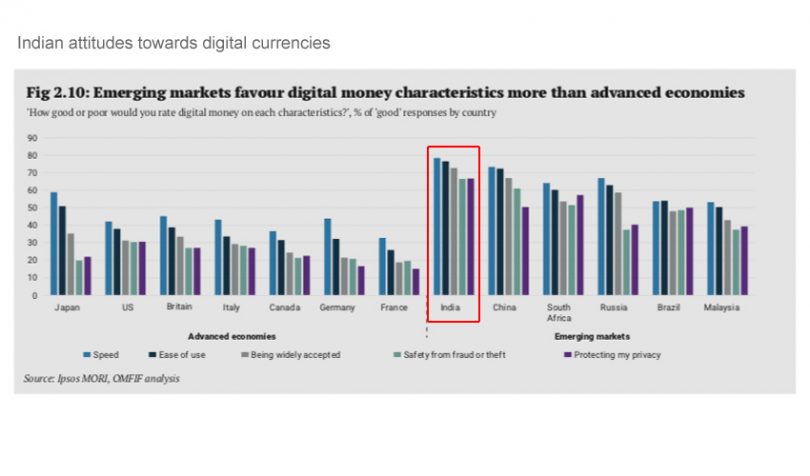A draft law to ban cryptocurrencies is almost complete and will be discussed by the federal cabinet, reports Bloomberg Quint, citing unnamed sources. After the discussion of the draft bill, it will be put to parliament.
Other than timing, this isn’t news. Last year the Reserve Bank of India issued a circular to regulated entities banning dealings in cryptocurrencies. This effectively blocked the onramp to digital currencies. Seven months ago, the Supreme Court ruled that the central bank couldn’t issue such a ruling in the absence of legislation, opening the cryptocurrency floodgates.
However, at that stage, a draft regulation was already in the works. Hence we noted the respite might be short lived.
The central bank had argued that an alternative payment system could undermine the current banking system and its ability to influence monetary policy. Arguably, India’s payment system is one of the world’s more advanced.
Crypto as a route for tax evasion?
“In this world nothing can be said to be certain, except death and taxes.” Benjamin Franklin
Apart from the central bank’s stated reasons, there’s another important factor. Anyone who has ever sent money to India will know that Indian banks require the reasons for payment. Presumably, this is used to monitor for anti money laundering but also tax avoidance. There are a significant number of Indians both in the country and abroad that work for foreign companies. So providing an unmonitored route for payments could also impact tax receipts.
In 2019 the global remittance market was $653 billion and India accounted for $83 billion. While there is an average headline figure of 7% as the cost for remittances, India generally benefits from lower rates because of its large market. For example, the World Bank says the average cost of remitting $200 to India from the U.S. is 3.37%. But where the recipient has a bank account and uses the internet for payments, there are two options that are less than 0.5%. And a person who uses cryptocurrency is more likely to fit that pattern. That’s not to say that there aren’t potential cost benefits to Indian citizens for cryptocurrency remittances in less trafficked corridors.
Is the cat out of the bag?
From the perspective of tax evasion, once a large number of users already have wallets within a country, it’s much harder to enforce a ban unless the penalties are sufficiently draconian to instill a sense of fear. The very nature of peer to peer trading means that people can move around the money they already have. And there will doubtless be local traders who become unofficial money changers for those that need to convert the cryptocurrencies to cash.
Another important factor is the interest of the Indian population in cryptocurrencies. In research conducted by Ipsos MORI and think tank OMFIF, Indians measured the most optimistic about digital currency for many questions, including digital currencies issued by technology firms or central banks.
Which leads on to India’s plans. At the start of the year, as part of work on a national blockchain strategy, a central bank digital currency (CBDC) is a topic that may be investigated. Bloomberg’s article said the government is planning a CBDC, but this appeared to be based on the same strategy document, which we didn’t interpret the same way given it was a draft document of suggestions. But that was some time ago.






